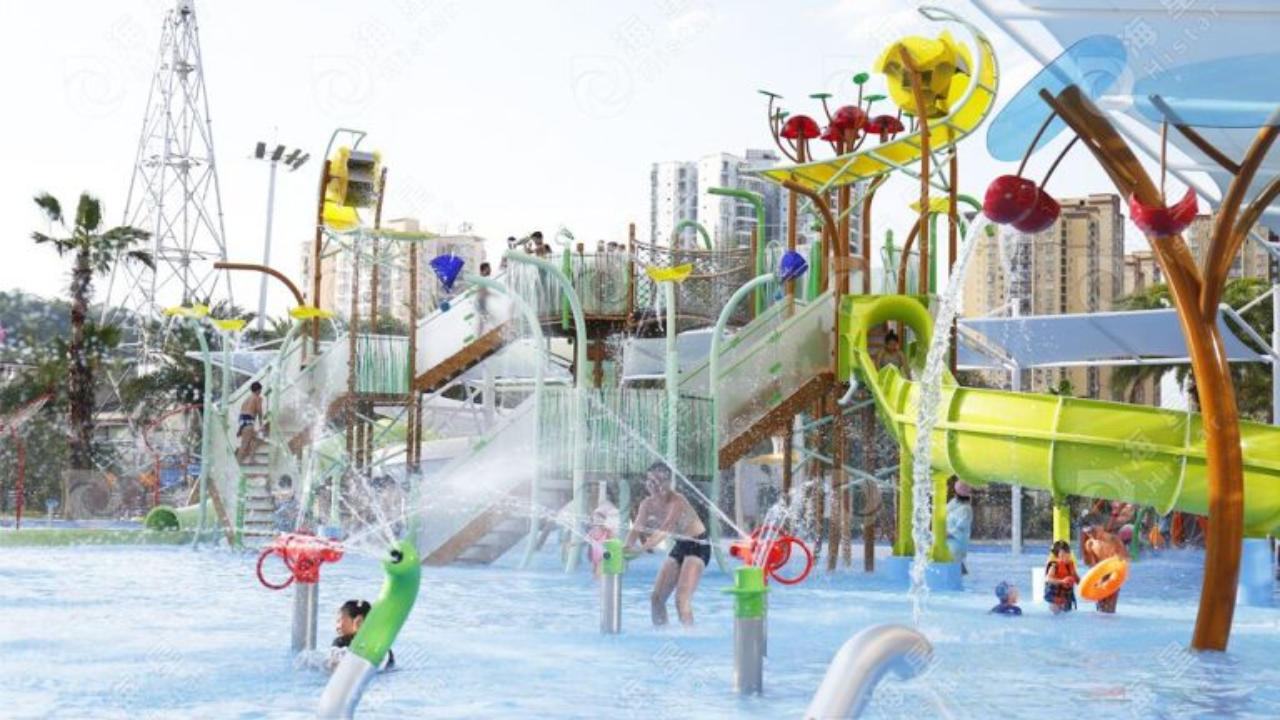Water park design should be cohesive and engaging. A well-integrated theme not only improves the visitor experience but also strengthens brand identity. Offering a thoughtful, immersive theme can help keep guests coming back to the park and set it apart in the crowded market. This article highlights the basics for effectively incorporating a unique water theme park design.
Set a Unique Theme for Your Water Park
The first and most important step in design is choosing a theme for a water park. The targeted demographics, along with market needs, should resonate with the theme in some way. The theme must be what the park wants to attract: families, thrill-seekers, or relaxation enthusiasts.
The theme must be scalable and flexible. It should accommodate future additions as water parks evolve and expand. For instance, a tropical island theme could introduce new water attractions, restaurants, and popular seasonal events.
Theme selection is heavily dependent on storytelling. A good story helps create an emotional appeal with visitors. When guests are able to associate with the theme story, they feel more immersed in the experience and, therefore, the experience is more memorable.
Architecting Infrastructure and Design to Accompany the Theme
The next step is to build the architecture and infrastructure. Buildings and landscapes should create a cohesive atmosphere through visual connection with the theme. For example, if the park adopts a jungle theme, lush greenery, bamboo structures and rustic buildings will add to the immersive experience.
But practical aspects of design also ought to be considered. The shade structure, seating areas, and walkways should become part of the environment. Bathrooms and restrooms should also be associated with the theme, keeping the same throughout the park.
Aligning the Water Attractions to the Theme’s Storyline
Water attractions are the heart of the park, and they have to mesh with the theme’s narrative. The story should lead the way into themed water slides, pools, and play areas. For example, in a park with a pirate theme, water attractions can be designed in the shape of ships or treasure hunts, allowing a deeper connection with the visitors.
Everything must be consistent across different attractions. To maintain a theme, design elements such as colors, textures, and materials must be uniform. For example, the pirate-themed slide could have aged wood and nautical ropes, and the pool area could have sand, treasure chests and shipwrecks.
For a richer experience, include sounds and lighting. Tropical rain can sound like waterfalls, and slides could have wave-like motion effects. The addition of color and texture can amplify water features.
Engaging Landscapes and Atmosphere: Creating
The theme comes to life in the landscape design. The theme can be further reinforced by incorporating natural elements such as plants, rocks, or water features. For instance, if visitors are expected to experience the park as an ancient ruin, then create the park around stone structures, ivy-covered columns, and decorative fountains in order to immerse the visitor in the environment truly.
Create an atmosphere to engage guests. Strategic lighting, soundscapes, and visual effects enhance the overall experience. For example, when lit by lanterns and dotted by waves, a park that takes on the theme of a beach can create a relaxing and enchanting atmosphere so that people will remember their visit for a longer time after leaving.
Brand Thematics and supporting facilities
Maintaining the park’s theme requires branding. The central story is further supported by themed signage incorporated throughout the park. The same narrative should be applied to restrooms, food stands, and shops. For example, food stalls could provide dishes that rely on the theme, such as tropical fruits or a pirate-inspired meal.
Another way to spin the theme is through merchandise. Such themed souvenirs, like custom t-shirts or mugs, can promote additional revenue and reinforce guests' connection with the park. Items that fit into the narrative can offer a stronger visitor experience of the park.
A Cohesive-Themed Experience in Final Touches
The final touches to the design will bring the theme to life. Even small details like signage, staff uniforms, and even the park’s scent can help add a sense of authenticity to the experience. If staff are dressed as lifeguards in beach uniforms or characters from the park’s story, staff uniforms should match the theme.
They also have their role in interactive elements. Photo ops, themed events and surprise performances keep the theme alive and keep people engaged. Themed events can change or rotate throughout the year to keep the experience feeling fresh for returning visitors.
The theme has to continue being exciting over time. Guests will continue to return if there are regular updates, new attractions, or even seasonal events based on the park’s theme.
Conclusion
The effective use of a good theme in water park design greatly contributes to visitor satisfaction and the overall success of the park. Everything should be about that central story: themes, attractions, facilities. Organized by the theme, the design is consistent, details attention to detail, and the architecture, water attractions, and landscapes are carefully utilized to maintain an engaging and immersive theme. Designers can use the park to keep visitors coming back by carefully weaving a theme through every aspect of the park.


